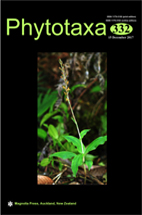Abstract
Phytoplasmas infestations are widely documented in angiosperms, especially in ornamental species (Chaturverdi et al. 2010). Infestations by these phloem-limited plant pathogenic bacteria may induce several symptoms such as loss of floral meristem determinacy and abnormal flower development, including virescence of floral organs and phyllody, i.e., replacement of floral organs by leaf-like structures (Lee et al. 2000, Chatuverdi et al. 2010). However, symptoms may also vary according to the plant host and other factors, such as localization of phytoplasmas in host tissues (Bertaccini 2007). Some species may be infested but remain asymptomatic by seasonal dormancy and they may act as reservoirs for the further spread of the phytoplasmas, involving insect vectors (Dermastia et al. 2017). Developments in the detection methods of phytoplasmas have contribute to a better understanding of these intriguing bacteria, and nowadays identification of these organisms rely mostly in molecular methods such as polymerase chain reaction of selected phytoplasma-specific gene regions (Dermastia et al. 2017). Our current understanding about phytoplasmas includes knowledge on how the phenotypes linked to the infestation by phytoplasmas are triggered: Kitazawa et al. (2017) presented results which suggest that these changes in floral organs are caused by the interactions of phyllogen (a virulence factor conserved in phytoplasmas) with ABCE-class MADS domains transcription factor (MTFs), which is known as key regulator of floral organs development in angiosperms.

